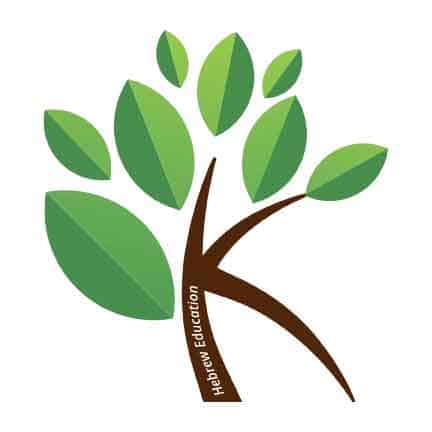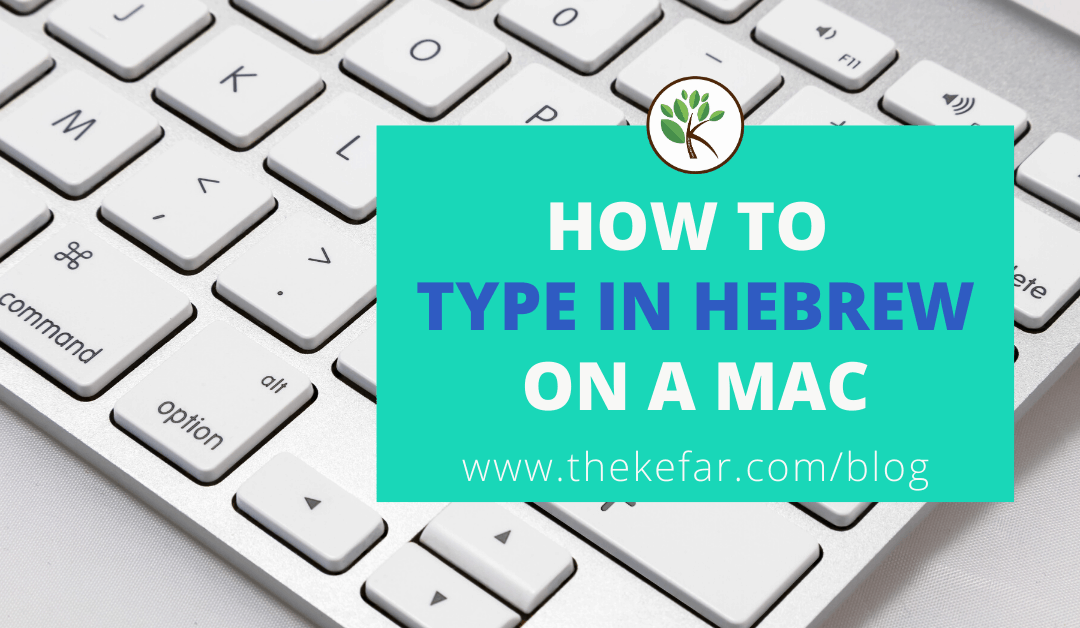First, go to System Preferences. If it’s not already in your dock, you can find it by clicking the Apple icon in the top left corner of your screen.
After you’ve opened your System Preferences, click on Keyboard.
From your Keyboard options, click on Input Sources.
On the left side of the Input Sources screen, you’ll see a menu that probably just says “U.S.,” with a flag icon. This represents the English language, which is already enabled on your Mac. Below that menu will be a Plus symbol button ( + ). Click the +.
When the language options pop up, select Hebrew. On a Mac, you have three Hebrew keyboards to choose from.
• • • The keyboard labeled Hebrew has the letters and symbols in the order that they appear on Macs sold/used in Israel.
• • • The keyboard labeled Hebrew – PC has the letters and symbols in the order that they appear on Windows computers sold/used in Israel. This is almost exactly the same as the Hebrew keyboard, there are only two small punctuation differences.
• • • The keyboard labeled Hebrew – QWERTY has the letters arranged to mimic the placement of the English QWERTY keyboard; for example, the letter T = Tav (ת), R = Resh (ר), M = Mem (מ), etc.
I use the Hebrew – QWERTY keyboard because I can type in Hebrew intuitively, nearly just as quickly as I type in English. I also don’t need to purchase Hebrew letter stickers for my laptop, since I know where all of the letters are.
Select the Hebrew keyboard that you want, then click the blue button that says Add. If you want to select multiple Hebrew keyboards, hold down the Command ⌘ button, select the keyboards that you want, then click Add.
The last step is to check the box that says Show Input menu in menu bar. When you do this, a flag will pop up on the top right of your computer menu bar, next to the time, wifi symbol, battery life, etc. You’re all set – you can close the Keyboard screen.
Now, whenever you want to switch your keyboard language from English to Hebrew or from Hebrew to English, all you need to do is click on the flag icon. For Hebrew, click on the Israeli flag icon; for English click on the U.S. flag icon.
That’s it! You’re all set to type in Hebrew on your Mac.


Fantastic! Being able to type in Hebrew is all I want. Now I can learn and practice Hebrew 24/7
Excellent! Glad I could help.
Vowel markings are made by using the OPTION key and one of the numbers. They are as follows:
Option1 ֲ
Option2 ֳ
Option3ֱ
Option4 ִ
Option5 ֵ
Option6 ַ
Option7 ָ
Option8 ֻ
Option9 ֶ
Option0ְ
Option. ּ
In the same way that you read, type the consonant followed by the vowel:
בֲּ (type the consonant, then Option. and then Option1 for bet with a reduced patach under it)
Suzi, I somehow missed this comment, thank you for providing readers with this information!
Thank you so much! This was what I needed.
Hi. I can type the Hebrew consonants on my Mac keyboard. How do I type the Hebrew vowels? Thanks
Here you go Carmen! http://www.thekefar.com/how-to-type-hebrew-vowels-nikkud-on-a-mac/
what about the end consonants ? (in hebrew – sofit?)
Shift+letter. I use the QWERTY keyboard, so Shift+M for Mem Sofit, Shift + N for Nun Sofit, etc.
This was perhaps the clearest and easiest set of instructions I have ever received. It enabled me to restore the Hebrew keyboard that mysteriously disappeared. תודה וכל הכבוד
I’m glad it was helpful, thanks for commenting!